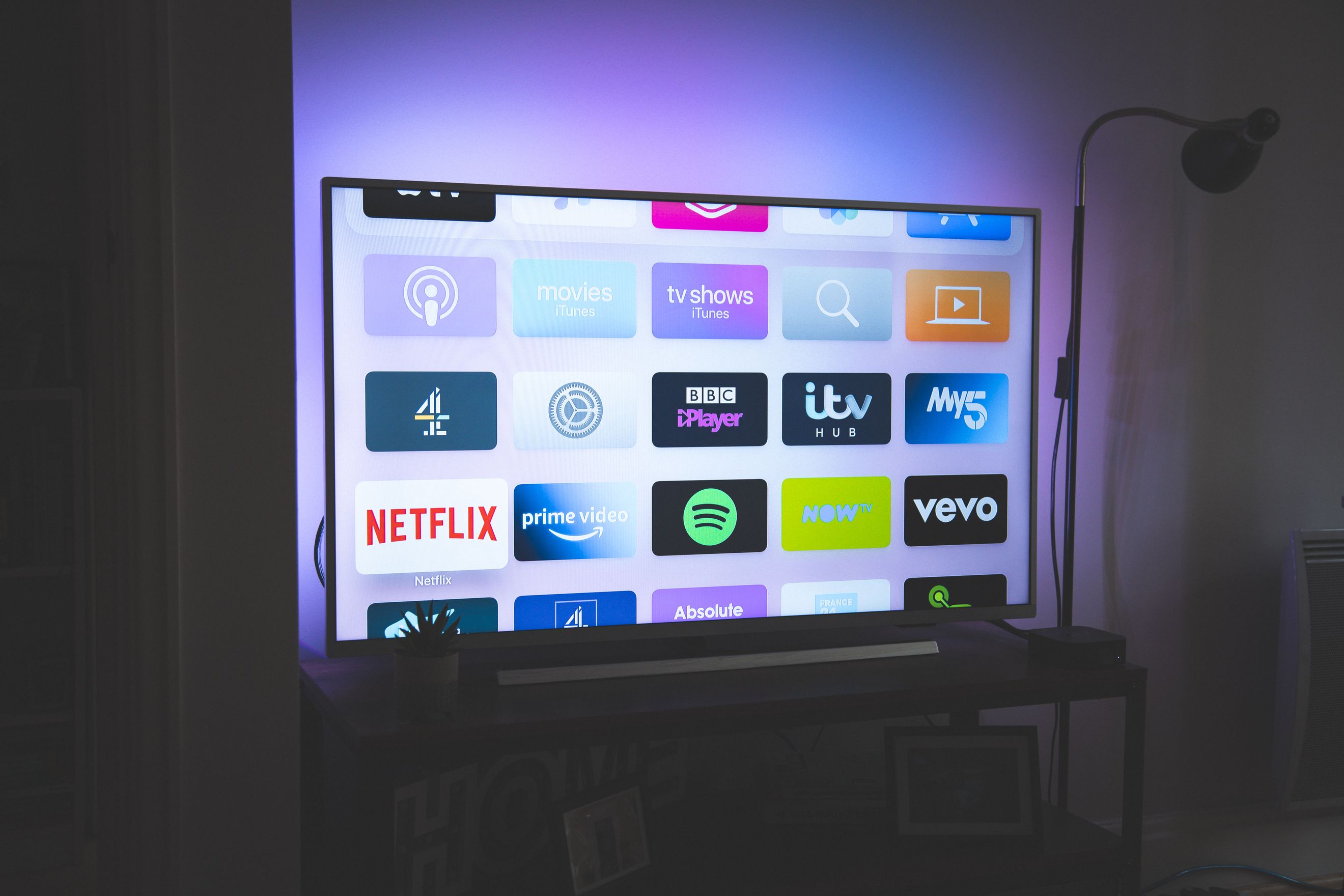
Taking TV for a 500 mile drive?
This works out at a daily working return commute of only 2 miles per day - suggesting the impact of watching TV for a year is small. However, taken globally, the number of individuals doing that same activity is large and that soon adds up to something meaningful.
Summary: In Mike Berners-Lee’s book, "How Bad are Bananas?: The Carbon Footprint of Everything", there is a statement that watching TV for a year has a similar carbon footprint to driving a car for 500 miles. This works out at a daily working return commute of only 2 miles per day - suggesting the impact of watching TV for a year is small. However, taken globally, the number of individuals doing that same activity is large and that soon adds up to something meaningful.
Why this is important: Sometimes our human activities are big and obvious - industrial processes need heat and pressure, from burning of fossil fuels, and emit greenhouse gases as byproducts. Sometimes they're small and not so obvious - streaming content from the cloud. Understanding the impact of activities can influence design, policy and marginal consumption choices.
The big theme: Greenhouse gases emitted by human activity are impacting the amount of heat that escapes our atmosphere and driving global warming. Atmospheric concentrations of carbon dioxide (CO2), methane (CH4), and nitrous oxide (NO2) have increased by more than 40, 150 and almost 20 percent respectively since pre-industrial revolution times. Over half of the CO2 rise has happened since 1970.

The details
In Mike Berners-Lee’s book, "How Bad are Bananas?: The Carbon Footprint of Everything", there is a statement that watching TV for a year has a similar carbon footprint to driving a car for 500 miles.
The carbon footprint from watching TV comes from:
- Manufacturing and delivering the TV to the consumer
- Powering the TV
- Accessing/receiving the content from your provider
There are a number of assumptions / questions in the '500 miles' assertion:
- What kind of TV or device are you watching on?
- How are you receiving the content?
- What kind of car are you driving that 500 miles?
Even taking the assertion of driving a car 500 miles - that's a daily working return commute of only 2 miles per day - the impact of an individual watching TV for a year is small. However, taken globally, the number of individuals doing that same activity is large and that soon adds up to something meaningful.
In a future Quick Insight we shall look at how you receive your content - streaming, satellite, terrestrial or managed IPTV - impacts the carbon footprint of watching that content in more detail.
Within Berners-Lee's calculations, a big part of the carbon footprint is the TV's embodied carbon or the emissions from manufacturing and delivering a TV to the consumer.
So let's start by looking at the TV.
What kind of TV or device are you watching on?
Berners-Lee calculates that watching an hour of TV on a 55-inch LED TV has the following carbon footprint, dependent on how you watch that content:
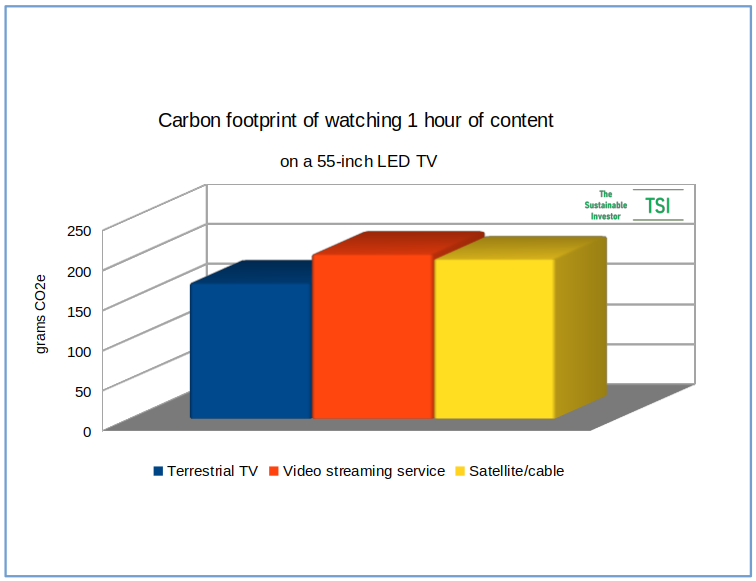
The average car emits 404 g of CO2 per mile. So for a year's worth of TV watching to be equivalent that equates to just under 2.7 hours per day. Seems reasonable.
The majority of the footprint is the embodied carbon:
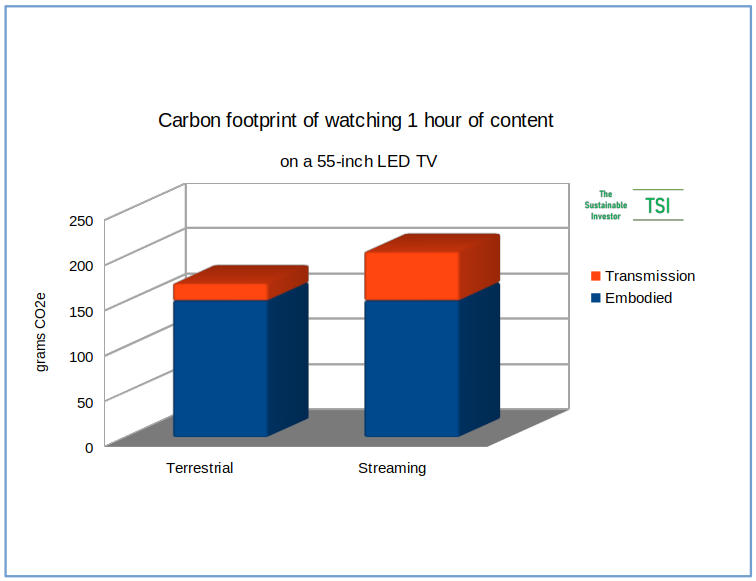
All else being equal, a bigger device has greater embodied carbon.
Operationally, TV's have become more efficient - a 55-inch LED TV only uses 25 percent of the electricity that a 42-inch plasma does.
But, TVs are still more energy hungry than mobile devices. A 50-inch LED TV consumes 100x more electricity than a smartphone; 5x more than a laptop, translating into differences in operational CO2e emissions:
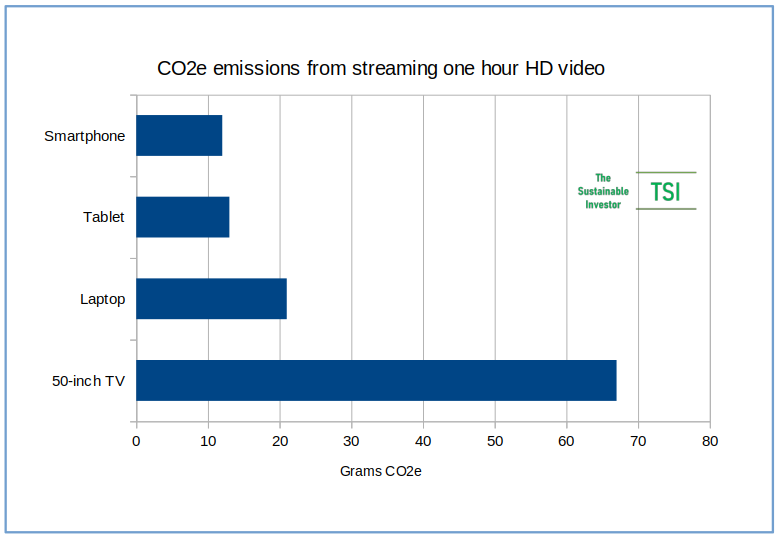
TV screen sizes have been getting bigger. By 2014, almost two-thirds of TVs shipped globally were 40-inch+. Five years later and the average TV size in the US was 51-inches.
Do we even need such big TVs?
Several sources have reported that 1.5x the screen size is the optimal distance for positioning a flat screen HD TV away from the viewer. In countries where living space is relatively small, for example in a Hong Kong apartment, there is little room to position a very large TV so the viewer enjoys the optimal viewing distance. This becomes less relevant in countries where living spaces are generally larger, such as the US.
In the chart below, if the green line is above a country line, then the corresponding TV size is too big for that room layout and size. For example, in the UK, a 40-inch screen is the right size for the average room; 50-inch would be too big.
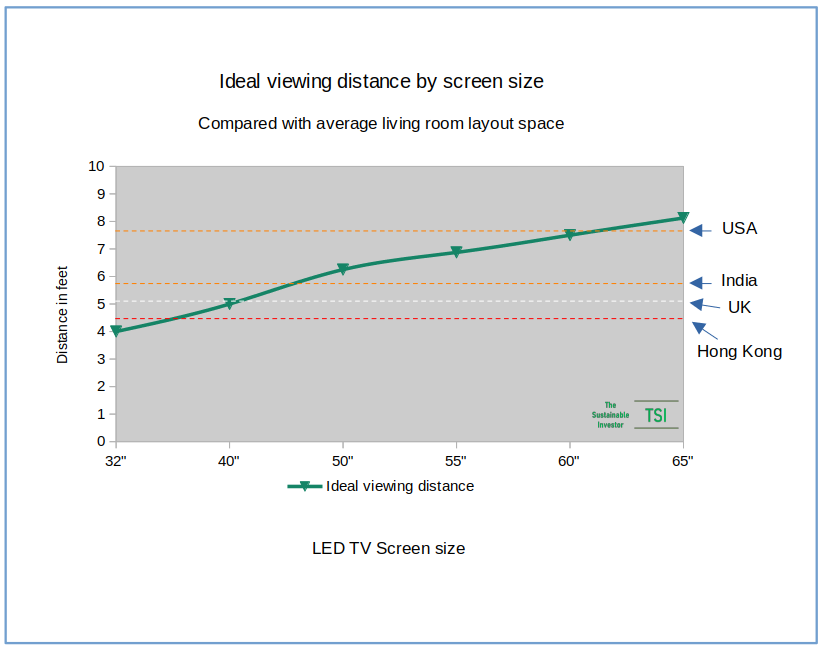
Finally, global TV shipments showed positive unit growth in only three of the past ten years (2014, 2016 and 2018). Are viewing habits changing from the big screen to mobile devices such as laptops, tablets or mobile phones?
Digital sustainability more broadly is a topic that we shall explore in more detail in an upcoming long blog.
Something a little more bespoke?
Get in touch if there is a particular topic you would like us to write on. Just for you.
Contact us
Please read: important legal stuff.

